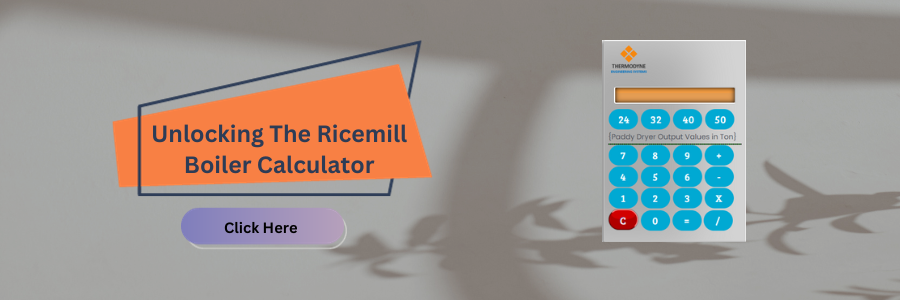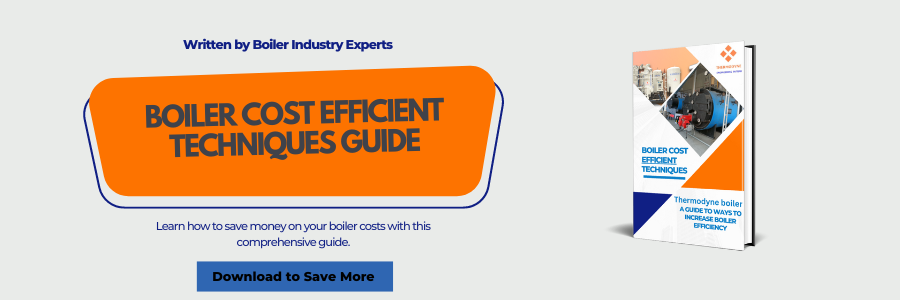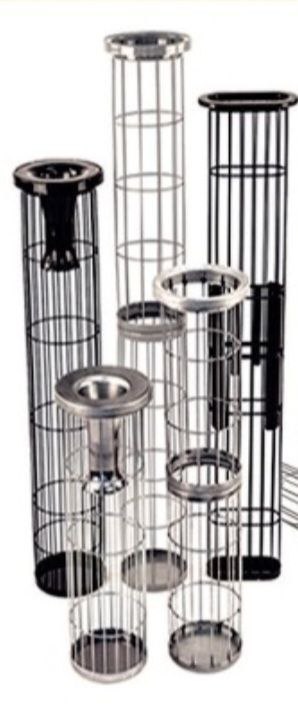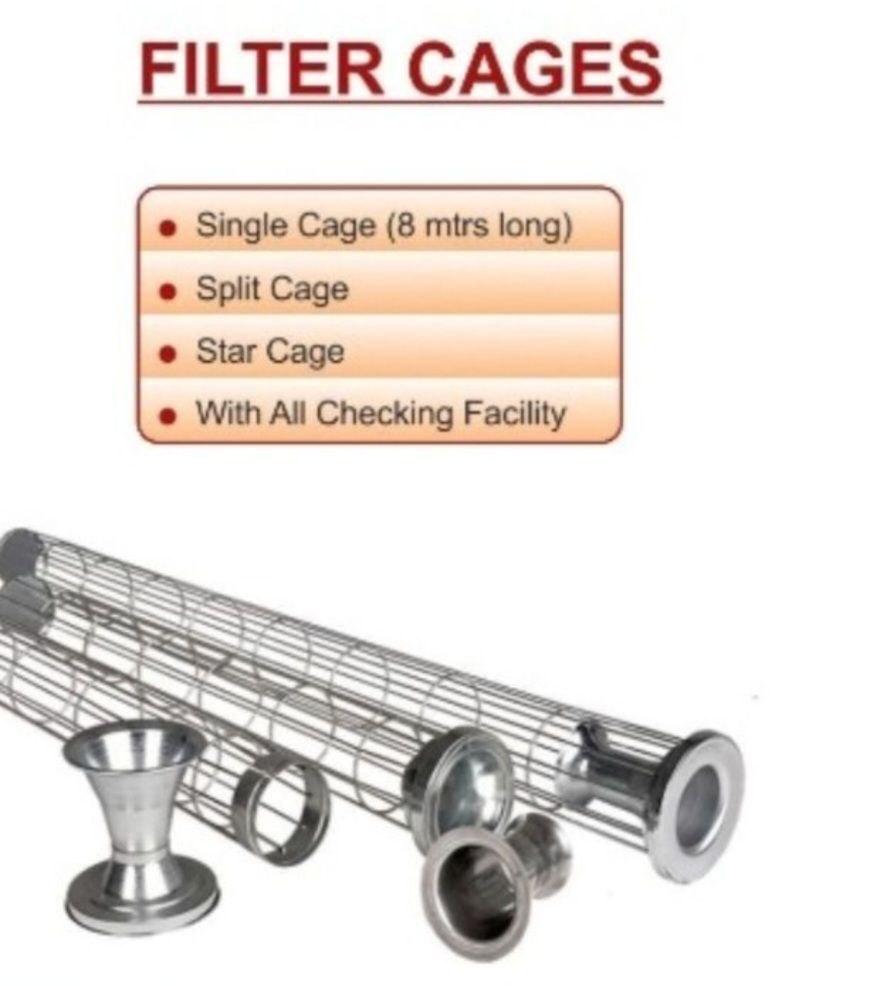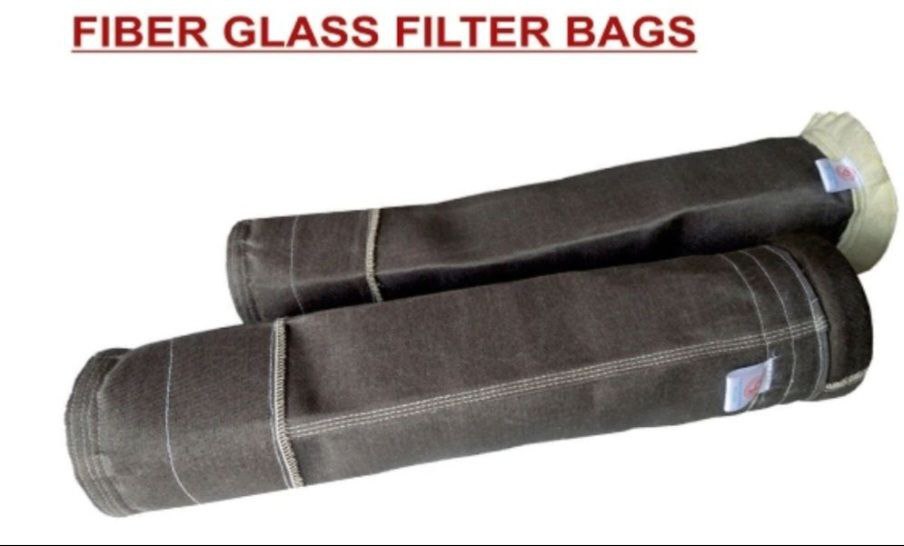Table of Contents
What is Bag Filter
A bag filter is a type of air pollution control device that uses a series of bags to remove particulate matter from gas streams. The bags are made of a filter media, such as polyester, nylon, or glass fiber, that has small pores that trap the particles. The gas stream flows through the bags, and the particles are captured on the surface of the bags. The bags are then cleaned periodically to remove the captured particles.
In industries, we use something called a bag filter to keep the air clean. This is especially important when we’re dealing with boilers. Imagine the bag filter as a superhero that catches tiny particles in the air.
The bag filter has special bags made of materials like polyester or nylon. These bags have small holes that trap the particles when the dirty air passes through them. This is particularly useful in processes involving boilers, where keeping the air clean is crucial.
Just like a superhero needs a break, the bag filter also needs some downtime. Every once in a while, we clean the bags to get rid of the trapped particles. This way, the bag filter and the boiler work together to make sure the air in industrial processes stays clean and safe. It’s a teamwork of efficiency and responsibility!
Bag filters are used in a variety of industries, including:
- Power generation
- Metal working
- Chemical manufacturing
- Food processing
- Pharmaceutical manufacturing
- Wastewater treatment
Bag filters are a reliable and effective way to remove particulate matter from gas streams. They are also relatively low-cost to operate and maintain.
A bag filter is like a big vacuum cleaner for cleaning the air. It’s used to remove dust, dirt, and other tiny particles from the air in places like factories, homes, or even cars.
- The Bag: Imagine a big bag made of special material that can trap tiny particles. This bag is like a filter.
- Air Sucking: When the air with dust and dirt in it is blown into the bag, the bag sucks in the air, just like a vacuum cleaner sucks in dirt.
- Filtering: As the air goes into the bag, the tiny particles like dust and dirt get trapped in the material of the bag. The clean air comes out on the other side.
- Clean Air: Now, the air that comes out of the bag is much cleaner because all the bad stuff is stuck in the bag.
- Maintenance: Over time, the bag gets filled with dust and dirt. So, you need to empty the bag or replace it with a new one to keep the filter working well.
So, in simple terms, a bag filter is like a big cleaning bag for the air, making sure the air we breathe is as clean as possible.
What is the function of bag filter in boiler ?
A bag filter is an air pollution control device that is commonly used in industrial settings, including boiler houses, to remove particulate matter (PM) from flue gases. PM, also known as soot or dust, is a type of air pollution that consists of tiny particles that can be harmful to human health and the environment.
In a boiler, flue gases are generated during the combustion of fuel to produce steam. These flue gases contain PM, along with other pollutants such as sulfur dioxide and nitrogen oxides. The bag filter works by passing the flue gases through a series of porous filter bags, which trap the PM particles on their surfaces. The clean gas then exits the filter, while the captured PM is periodically removed from the bags.
Bag filters are highly efficient at removing PM from flue gases, and they can achieve removal rates of up to 99.9%. This makes them an effective way to control air pollution from boiler and other industrial processes.
Here are some of the key functions of a bag filter in a boiler:
- Removes particulate matter (PM) from flue gases: Bag filters are designed to capture PM particles from flue gases, preventing them from being released into the atmosphere. This helps to improve air quality and reduce the risk of respiratory problems and other health effects associated with PM exposure.
- Protects boiler components from damage: PM can accumulate on boiler components, reducing their efficiency and causing damage. Bag filters help to prevent this by removing PM from the flue gases before they reach the boiler.
- Complies with environmental regulations: Many countries have environmental regulations that limit the amount of PM that can be emitted from industrial sources. Bag filters can help boilers to comply with these regulations and avoid fines or other penalties.
- Increases boiler efficiency: By removing PM from flue gases, bag filters can help to improve boiler efficiency by reducing the amount of energy required to heat the flue gases.
- Extends boiler lifespan: By protecting boiler components from damage, bag filters can help to extend the lifespan of the boiler.
What is the use of bag filter in boiler?
A bag filter, also known as a baghouse, is an air pollution control device that is commonly used in industrial settings, including boiler operations. It is designed to remove particulate matter (PM) from flue gases, which are the gases produced by the combustion of fuel in a boiler. PM is a major component of air pollution, and it can have serious health effects, such as respiratory problems, heart disease, and cancer.Bag filters work by forcing flue gases through a series of fabric bags. The bags are made of a porous material, such as polyester, nylon, or glass fiber, that traps the PM particles. The clean gas then exits the filter, while the PM particles are collected in the bags.
Bag filters are effective at removing a wide range of PM sizes, from coarse dust particles to fine soot particles. They are also relatively inexpensive to operate and maintain. As a result, bag filters are a popular choice for controlling PM emissions from boilers.Type of Bag Filter
Pulse jet bag filters: These filters use a blast of compressed air to dislodge the collected particles from the bags. This is the most common type of bag filter and is used in a wide range of applications.
Reverse air bag filters: These filters use a reverse flow of air to dislodge the collected particles from the bags. This type of filter is less common than pulse jet filters, but it is often used in applications where the dust is very fine or where the filter bags are made of a delicate material.
Shaker bag filters: These filters use a shaking motion to dislodge the collected particles from the bags. This type of filter is less common than pulse jet or reverse air filters, but it is often used in applications where the dust is very sticky or where the filter bags are made of a heavy material.
Multi-clone bag filters: These filters use multiple bags in parallel to increase the filtration area.
High-efficiency bag filters: These filters are designed to remove very fine particles, such as those found in smoke or fumes
Bag Filters in the Boiler
Bag Filters are air pollution-controlling industrial equipment, used prominently in a Steam Boiler House Assembly. It is used to control the levels of sulfur dioxide and others. Bag Filters play a crucial role in controlling air pollution in a Industrial Steam Boilers House Assembly by effectively capturing and removing pollutants such as sulfur dioxide, particulate matter, and other harmful emissions. They help maintain compliance with environmental regulations while ensuring cleaner air release into the atmosphere.
The Bag Filter is a dust control device whose purpose is removing the dust contained in the exhaust gases from
industrial processes. It is applied to various applications with different temperatures and types of gasses by selecting the filter media accordingly.
The Advantage Of a Bag Filter boiler Over The Cyclone Collector Is That It Can Collect The Submicron Particles.
Working Principle of Bag Filter
The working principle of a bag filter is based on the filtration of particulate matter from a gas stream. The gas stream enters the filter and flows through a series of bags. The bags are made of a filter media, such as polyester, nylon, or glass fiber, that has small pores that trap the particles. The particles are captured on the surface of the bags, and the clean gas flows out of the filter.
The bags are then cleaned periodically to remove the captured particles. There are two main methods for cleaning bag filters:
- Shaker cleaning: In shaker cleaning, the bags are shaken to dislodge the captured particles. This is a simple and effective method, but it can be noisy.
- Pulse jet cleaning: In pulse jet cleaning, a short burst of compressed air is directed into the bags. This dislodges the captured particles and blows them into a hopper at the bottom of the filter. Pulse jet cleaning is more effective than shaker cleaning, but it is also more expensive.
The frequency of bag cleaning depends on the type of filter and the amount of particulate matter in the gas stream. In general, bag filters should be cleaned when the pressure drop across the filter increases to a predetermined level.
Bag filters are a reliable and effective way to remove particulate matter from gas streams. They are also relatively low-cost to operate and maintain. Bag filters are used in a variety of industries, including power generation, metalworking, chemical manufacturing, food processing, pharmaceutical manufacturing, and wastewater treatment.
Here are some of the factors that can affect the performance of a bag filter:
- The type of filter media
- The size of the particles to be removed
- The velocity of the gas stream
- The temperature of the gas stream
- The humidity of the gas stream
- The frequency of cleaning
The bag filter operates on a straightforward principle and is widely used for air and gas filtration in various industrial applications. It effectively removes particulate matter, dust, and contaminants from a gas stream through a multi-step process.
Here’s how the bag filter works:
- Inlet of Gas Stream: The gas stream containing particles and contaminants enters the bag filter system.
- Filter Housing: The filter housing is a chamber that contains a series of fabric bags. These bags are made from materials such as woven or felted fabric with varying degrees of porosity, allowing them to capture particles of different sizes.
- Filtration Process: As the gas stream flows into the filter housing, its velocity decreases due to the larger space available. This reduction in velocity causes the particles carried by the gas to lose their kinetic energy. As a result, the particles start to settle and are unable to maintain their suspension in the gas.
- Particle Capture: The fabric bags within the housing act as the primary filtration medium. The bags are strategically placed in such a way that the gas must pass through them. As the gas flows through the bags, the particles are intercepted by the fabric’s surface due to various mechanisms such as direct impaction, interception, and diffusion.
- Accumulation on Bag Surface: Over time, the captured particles accumulate on the outer surface of the fabric bags. This accumulation forms a layer of dust and contaminants.
- Pressure Differential: As the layer of captured particles builds up, it creates a pressure differential between the gas inside the bags and the gas outside the bags. This pressure differential, also known as the pressure drop, is a crucial parameter indicating the performance and efficiency of the bag filter.
- Cleaning Mechanism (Pulse Jet Cleaning): To maintain the efficiency of the filtration process and to prevent excessive pressure drop, the accumulated particles must be periodically removed from the bags. One common cleaning method is the pulse jet cleaning system. This system involves the use of compressed air directed into the bags in a controlled manner. The sudden release of compressed air creates a shockwave that causes the fabric to flex and vibrate. This action dislodges and releases the accumulated particles from the fabric’s surface, allowing them to fall into a collection hopper at the bottom of the housing.
- Particle Disposal: The collected particles are then disposed of properly, often as waste material.
- Continuous Operation: The bag filter system operates continuously, with the filtration, accumulation, and cleaning cycles repeating as needed based on factors such as the type of particles being filtered, the gas flow rate, and the desired filtration efficiency.
In summary, the bag filter’s working principle revolves around using fabric bags as a filtration medium to capture particles from a gas stream. The captured particles are periodically removed through a cleaning process to maintain efficient filtration. This makes bag filters effective tools for maintaining air quality in various industrial processes and applications.
Diagram of Bag Filter
Structure of Bag Filter
The structure of a bag filter is as follows:
- Dust hopper: This is the bottom part of the bag filter where the collected dust is stored.
- Filter chamber: This is the main part of the bag filter where the filtration process takes place. It is made up of a series of filter bags that are suspended from a frame.
- Cleaning system: This is the system that is used to clean the filter bags. There are two main types of cleaning systems: pulse jet cleaning and mechanical shaking.
- Air duct: This is the duct that carries the dirty gas from the source to the bag filter.
- Fan: This is the fan that is used to draw the dirty gas through the bag filter.
The following are the steps involved in the filtration process of a bag filter:
- The dirty gas enters the bag filter through the air duct.
- The gas passes through the filter bags, and the dust particles are captured on the surface of the bags.
- The dust-laden bags are cleaned by the cleaning system.
- The clean gas is then discharged from the bag filter.
The frequency of cleaning the filter bags depends on the amount of dust that is collected. The filter bags should be cleaned regularly to prevent the dust from building up and clogging the filter.
Advantages of Bag Filters in boilers
- Fabric filters in general provide high collection efficiencies on both coarse and fine (submicron) particulates.
- They are relatively insensitive to fluctuations in gas stream conditions.
- Operation is relatively simple.
- Unlike electrostatic precipitators, fabric filter systems do not require the use of high voltage, therefore, maintenance is simplified and flammable dust may be collected with proper care.
- Fabric filters are useful for collecting particles with resistivities either too low or too high for collection with electrostatic precipitators.
- Fabric filters therefore may be good candidates for collecting fly ash from low sulfur coals or fly ash containing high unburned carbon levels, which respectively have high and low resistivities, and thus are relatively difficult to collect with electrostatic precipitators.
Bag-house Filter Types
There are different types of Bag Filters such as
- Shakers
- Reverse Air
- Pulse Jet type (most promising one of outstanding results)
Thermodyne offers the bag filter with a customized design that best suits your process exhaust and fulfills the requirements. These are equipped with the latest features and bag hanging technology with automation, which allows for easy cleaning of the bags and ensures long-lasting operation. The efficiency of the bag filter is 99% with an appropriate selection of filter materials as per the process exhaust. For any other information regarding our product and services feel free to contact us.
We, at Thermodyne Boilers, have successfully installed and commissioned Bag filters at various sites and has helped in protecting the environment.
Bag filters are used in a variety of industries, including:
- Power plants
- Steel mills
- Pharmaceutical producers
- Food manufacturers
- Chemical producers
- Wastewater treatment plants
- Mining operations
- Wood processing plants
Also Read: Air Pollution Control Equipment
Bag Filter System FAQs
A bag filter is a type of air filter that uses a series of fabric bags to remove particulate matter from the air. The air to be filtered is passed through the bags, and the particles are captured on the surface of the fabric. The bags are then cleaned to remove the captured particles.
The working principle of a bag filter is based on the principle of interception and diffusion. The particles in the air are intercepted by the fabric bags, and the smaller particles are diffused onto the surface of the fabric. The captured particles are then removed from the bags by shaking or pulsing the bags
Bag filters have a number of advantages over other types of air filters. They have a high filtration efficiency, typically up to 99%. They are also able to handle a wide range of particulate matter sizes, from large dust particles to small smoke particles. Bag filters are also relatively easy to maintain and operate.
Bag filters have a few disadvantages. They are more expensive than other types of air filters. They also require more space than other types of air filters. Additionally, bag filters can become clogged with particles, which can reduce their efficiency.
A bag filter typically consists of a housing, a series of fabric bags, and a cleaning system. The housing is the main structure of the filter, and it provides support for the bags and the cleaning system. The bags are made of a variety of fabrics, and they are designed to capture particles of a specific size. The cleaning system is used to remove the captured particles from the bags.
The cleaning system for a bag filter typically uses one of two methods: shaking or pulsing. Shaking involves vibrating the bags to dislodge the captured particles. Pulsing involves injecting a pulse of air into the bag to dislodge the captured particles.
The frequency with which bag filters need to be cleaned depends on the amount of particulate matter in the air that they are filtering. In general, bag filters should be cleaned every few weeks or months.
In addition to cleaning, bag filters also require periodic inspection and replacement of the bags. The bags should be inspected for signs of wear and tear, and they should be replaced if they are damaged or clogged.
Bag filters are used in a variety of applications, including:
Industrial dust collection
Air pollution control
Water purification
Medical gas filtration
Food processing
The future trends for bag filters are to develop filters that are more efficient, more durable, and easier to maintain. There is also a growing trend towards the use of bag filters in renewable energy applications, such as wind and solar power generation.
Bag filters are a type of air pollution control device that use fabric bags to collect dust particles from industrial exhaust gases. The principle of operation of a bag filter is based on the following:
The dirty gas enters the bag filter through the air duct.
The gas passes through the filter bags, and the dust particles are captured on the surface of the bags.
The dust-laden bags are cleaned by the cleaning system.
The clean gas is then discharged from the bag filter.
The structure of a bag filter is as follows:
Dust hopper: This is the bottom part of the bag filter where the collected dust is stored.
Filter chamber: This is the main part of the bag filter where the filtration process takes place. It is made up of a series of filter bags that are suspended from a frame.
Cleaning system: This is the system that is used to clean the filter bags. There are two main types of cleaning systems: pulse jet cleaning and mechanical


